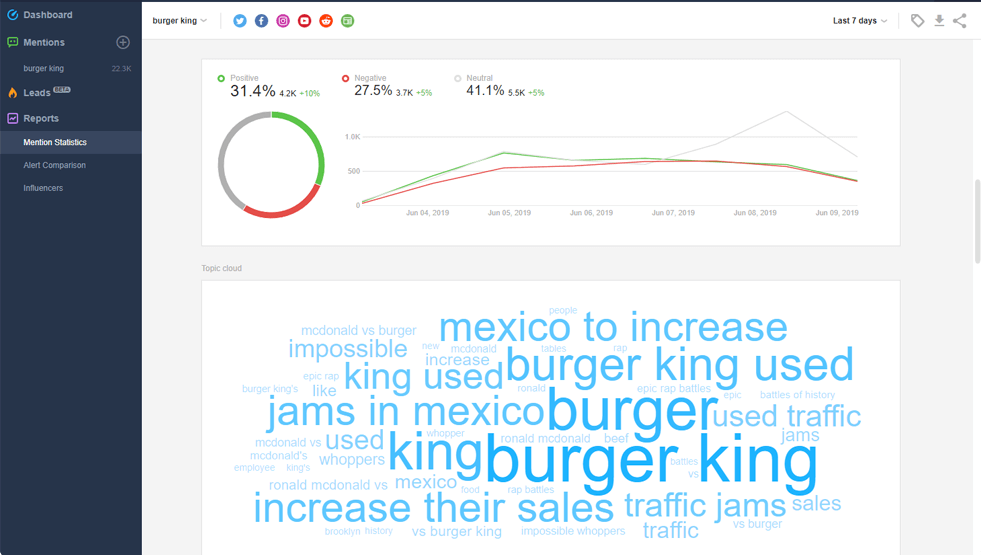In today’s digital age, social media has become an integral part of our lives. With billions of users worldwide, platforms like Facebook, Twitter, and Instagram have transformed the way we communicate, share, and interact. But beneath the façade of likes, shares, and retweets lies a hidden dimension – sentiment. This article delves deep into the realm of sentiment in social media, exploring how emotions are expressed, detected, and interpreted through online interactions.
The Spectrum of Sentiment in Social Media

Defining Positive, Negative, and Neutral
Before we dive into the complexities, let’s define our terms. Sentiment can be categorized into three main types: positive, negative, and neutral. Positive sentiment encompasses joy, excitement, and happiness. Negative sentiment, on the other hand, involves emotions like anger, sadness, and frustration. Neutral sentiment reflects a lack of strong emotional expression.
Analyzing Sentiment: Tools and Techniques
1. Natural Language Processing (NLP)
The rise of Natural Language Processing has revolutionized sentiment analysis. NLP algorithms dissect text to determine its emotional tone, allowing us to gauge the sentiment behind social media posts. Through machine learning, NLP models can distinguish nuances and context, ensuring more accurate results.
2. Mining the Data Gold: Hashtags and Keywords
Social media is a treasure trove of sentiment-laden data. Analyzing trending hashtags, keywords, and phrases provides insights into public opinion on various topics. By harnessing the power of big data, researchers can identify patterns and trends, unveiling the collective sentiment of a community.
The Challenges of Interpreting Sentiment
1. Sarcasm and Irony: Deciphering Hidden Meanings
Sentiment analysis faces hurdles when it comes to detecting sarcasm and irony. Humans excel at understanding contextual cues, but machines often struggle to grasp subtleties. Unraveling these linguistic nuances is crucial for accurate sentiment interpretation.
2. Cultural and Contextual Influences
Sentiment varies across cultures and contexts. What might be perceived as positive in one culture could be neutral or negative in another. Understanding these variations is essential to avoid misinterpreting sentiment and forming inaccurate conclusions.
The Impact on Businesses and Brands
1. Leveraging Positive Sentiment for Marketing
Businesses have caught on to the power of sentiment in social media. Positive sentiment can be a potent marketing tool, as happy customers are more likely to become brand advocates. Companies often monitor sentiment to tailor their messaging and strategies accordingly.
2. Damage Control: Addressing Negative Sentiment
On the flip side, negative sentiment can harm a brand’s reputation. Addressing customer complaints promptly and transparently can mitigate the damage. Companies that actively engage with disgruntled customers demonstrate a commitment to improvement.
Ethical Considerations in Sentiment in Social Media
1. Privacy and Consent
The pursuit of sentiment data raises ethical questions about user privacy and consent. Social media users might not be aware that their posts are being analyzed for sentiment. Striking a balance between research and privacy is imperative.
2. Bias in Algorithmic Analysis
Algorithms used in sentiment analysis can inherit bias from their training data. This bias might lead to skewed interpretations, reinforcing stereotypes or excluding certain demographics. Developers must continually refine algorithms to ensure fairness.
Conclusion
Sentiment in social media is a multifaceted realm that intertwines technology, linguistics, and human emotions. As we navigate the digital landscape, understanding the sentiment behind the posts enables us to comprehend public opinion, make informed decisions, and foster meaningful interactions. By embracing the challenges and refining the tools, we can unlock the true power of sentiment analysis. If you’re eager to explore the cutting-edge capabilities of sentiment analysis, we invite you to request a demo from AIM Technologies. Discover how our advanced solutions can provide actionable insights from the sea of social media sentiment.
FAQs
What is sentiment analysis?
- Sentiment analysis involves using algorithms to determine the emotional tone of text, such as social media posts or reviews.
Why is sentiment analysis important for businesses?
- Sentiment analysis helps businesses gauge public opinion, tailor marketing strategies, and address customer concerns.
Can sentiment analysis accurately detect sarcasm?
- While advancements have been made, detecting sarcasm and irony in the text remains a challenge for sentiment analysis algorithms.
How does culture affect sentiment interpretation?
- Cultural norms and context can influence how sentiment is perceived, making it essential to consider cultural variations.
What are the ethical implications of sentiment analysis?
- Ethical concerns include user privacy, consent for data analysis, and addressing bias in algorithmic interpretation.




